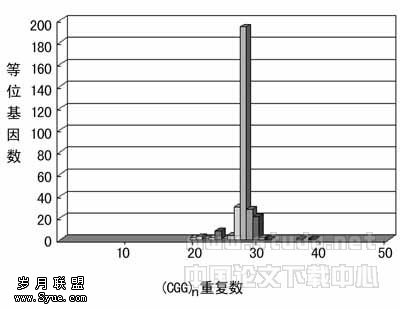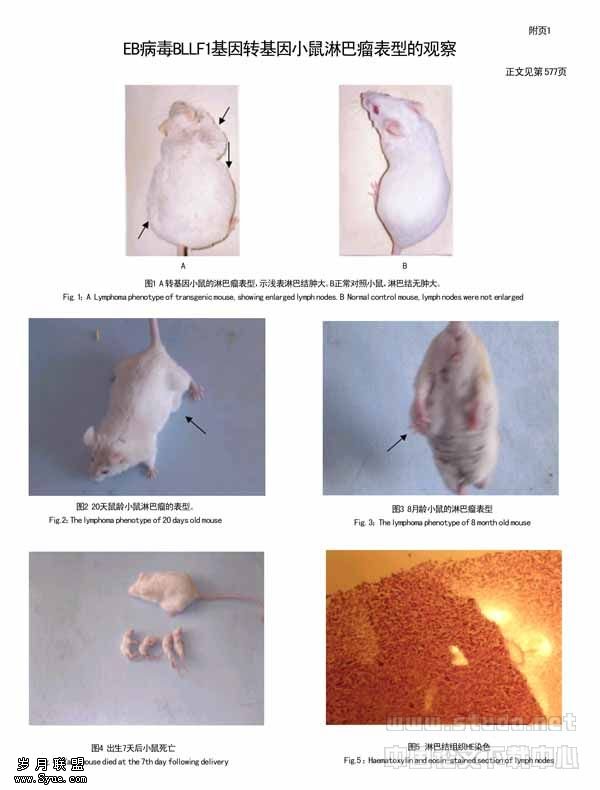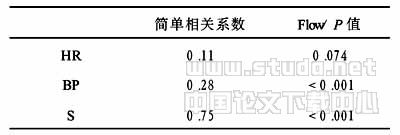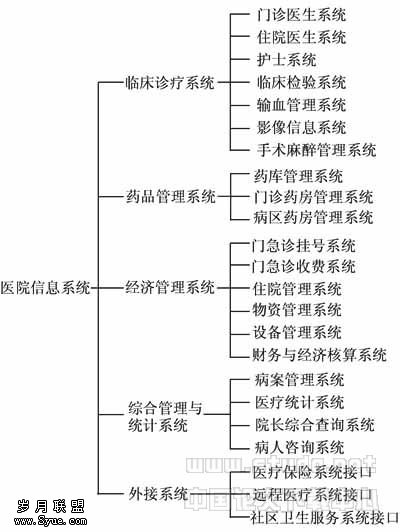M-FISH 用于骨髓增生异常综合征细胞株MUTZ-1复杂核型的检测分析
作者:陈宝安,夏国华,李建勇,肖冰,邵泽叶
陈宁娜,高冲,吴雨洁
【摘要】 本研究的目的是观察伴有5号染色体缺失的MDS 细胞株MUTZ-1细胞的遗传学变化。首先采用R显带技术对染色体标本进行核型分析,再以Vysis Spectra VysionTM M-FISH作为探针,检测并分析其复杂异常核型。结果表明: M-FISH分析显示有明显的高频率染色体的易位、插入、断裂与重接、缺失、数目增多;染色体分析揭示核型为50,xx,der(1) t(1;2),ins(1;14),+der(2)t(2;19),der(3)t(3;5),der(3)(3::5::22),5q-,der(6)t(3;6),der(7)(18::7::17),+8,+der(9)t(1;9),der(10)t(1;10),+11,+12,der(?13)(10::13::5::8),der(14)t(8;14),der(14)t(14,15),der(15)t(15;21)×2,+17,+18,-21,-22. 结论: MDS 细胞株MUTZ-1在M-FISH检测下有显著复杂的核型变化;M-FISH能增加高度复杂的异常染色体检测的准确性,有助于MDS的诊断和预后评估。
【关键词】 骨髓增生异常综合征
Cytogenetic studies play a major role in confirmation of diagnosis and prediction of clinical outcome in MDS,and have contributed to the understanding of its pathogenesis. No cytogenetic abnormality is specific for MDS or for a specific morphologic subgroup of MDS[1]. However,some unique cytogenetic/morphologic correlations exist,the most common of which is the “5q-syndrome”. In this report,we describe a myelodysplastic syndrome cell line (MUTZ-1) from a little girl diagnosed as having REAB with complex karyotype by metaphase fluorescence in situ hybridization (M-FISH).
Materials and Methods
Reagents and instruments
Vysis Spectra VysionTM M-FISH kit and DAPI II Counterstain (125 ng/ml in antifade mounting solution) were purchased from American Vysis Corporation. Rubber cement for sealing the coverslip came from American Starkey Chemical. RNase and pepsin were purchased from Sigama Corporation. In addition,The Leica DMRA2 fluorescence microscopy with a charge coupled device camera and Cytovision Specta Vysion software were respectively purchased from German Leica corporation,Applied Imaging corporation.
Case description
The patient was a 5-year-old girl who presented to hospital in 1997 with general fatigue. She was diagnosed as having REAB according to the FAB classification. Myelodysplastic syndrome cell line (MUTZ-1) was established and cultured at the time. The karyotype of the original MUTZ-1 cells showing high frequency of chromosome 5q deletion was first detected and analysed in 1997;the cell surface marker profiles of original MUTZ-1 cells were positive for CD10,CD19,CyIgM[2].
Chromosomal analysis was performed after short-term liquid culture and then harvested to produce metaphases cells according to stardard procedure. Metaphases were R-banded and karyotyped according to the international system for human cytogenetic nomenclature(ISCN) 1995[3].
Fluorescence in situ hybridization(M-FISH) studies
The chromosome specimen was taken out from -20℃ storage and the slides were placed in methanol:acetic acid (3∶1) for a few seconds. Applied cells have been fixed in Carnoy’s fixative using slide preparation tech- nologes[4]. Place the slides in 2×SSC at 37℃ for 30 minutes,dehydrate the slides by placing in 70%,85%,100% ethanol for 1 minutes each. Air dry the slides and proceed to apply 20 μl 0.01 mg/ml RNase working solution to the target region of the slides and apply a 22 mm×22mm glass coverslip for 30 minutes. Wash two times for 5 minutes each in 2×SSC after removing the coverslip. Place the slides in the 0.0005% pepsin working solution at 37℃ for 5 minutes,wash two times for 5 minutes each in 1×PBS. Place the slides in a fresh solution of methanol fixation solution for 2 minutes and then wash two times for 5 minutes each in PBS at ambient temperature. Dehydrate the slides by placing in 70%,85% and 100% ethanol at ambient temperature for 1 minute each,air dry the slides and proceed to immerse the slides in the 2×SSC denaturation solution of formaldehyde at 72℃ for 2 minutes,dehydrate the slides by placing in 70%,85% and 100% ethanol at -20℃ for 1 minute each,air dry the slides for hybridization. Remove the Spetra Vysion probe composing of five different fluorescence from -20℃ storage and allow the probe to adjust to ambient temperature,denature the probe by floating the tube containing the probe in a 72℃ water bath for 5 minutes,apply 10 μl of the Spetra Vysion probe to the target area of the specimen slide and apply a 22 mm×22mm glass coverslip,seal the coverslip with rubber cement to prevent evaporation during hybridization. Place slides in a prewarmed humaidified box and place box in a 37℃ incubator for 16-18 hours. Remove the coverslip from the slides and immediately immerse the slides in the 0.4×SSC /0.3% NP-40 at 72℃ for 2 minutes,2×SSC /0.1% NP-40 at ambient temperature for 40 to 50 seconds,air dry the slides in the darkness. Apply 10μl DAPI III counterstain to the target area of slides and apply coverslip for 1 hour.
Fluorescence microscopy and image analysis
The Leica DMRA2 fluorescence microscopy with a charge coupled device camera was used to capture the metaphase images by acquiring the images in the following fluorophore sequence: spectrumGold first,spectrumfred second,then spectrumAqua,spectrumRed and spctrumGreen next in any order and the DAPI last. At least two hundred cells were performed and the overlapped cells were not counted in. Automated acquisition and overlaying of images were performed with Cytovision Specta Vysion software.
Results
The original image of fluorescence in situ hybridization was captured by the Leica DMRA2 fluorescence microscopy with a charge coupled device camera (Figure 1). The high frequency chromosomal aberrations,including translocation,insertion,breakage,rearrangements,deletion,and increasement of chromosomal number have been confirmed. The initial interpretation of the karyotype of myelodysplastic syndrome cell line(MUTZ-1) was shown as 50,xx,der(1)t(1;2),ins(1;14),+der(2)t(2;19),der(3)t(3;5),der(3)t(3;5),der(3)(3::5::22),5q-,der(6)t(3;6),der(7)(18::7::17),+8,+der(9)t(1;9),der
M-FISH is an important technique to improve the cha- racterization of complex rearranged karyotypes. We present here with a myelodysplastic syndrome cell line (MUTZ-1) with cryptic chromosomal aberrations and structural rearrangement,the complexity of which could not have been deduced or imagined from R-banding analysis for poor metaphase spreads,contracted chromosomes,or the presence of marker chromosomes,rings,or unidentified material attracted to a chromosome[5].In this case of low mosaics in R-bands,it is recommendable to increase the number of metaphases analyzed with M-FISH to increase hybridization area . Since chromosomal changes are used for therapy design[6],it is necessary that chromosomal aberrations represent one of the most important independent prognostic factors,concerning the likelihood of remission induction and risk of relapse;it is necessary to elucidate chromosomal changes as precise as possible,identifying these changes will provide accurate diagnostic and prognostic information for better patient treatment and management. Multiplex fluorescence in M-FISH therefore allowed a comprehensive analysis and had also encouraged the hope for the detection of chromosomal complex aberrations in cases with an apparently normal karyotype. The advancing genomic hybridisation technologies would mainly have detected the translocation,insertion,deletion,breakage and rearrangements. Thus,complex tools for a high resolution analysis of metaphase chromosomes will remain an indispensable cornerstone in cytogenetics[7].
In summary,M-FISH is one of the very helpful tools to supplement R-banding and for the identification of further prognostic significant rearrangements.
Acknowledgements:
We thank professor Dohner Konstanze and Professor Dohner Hartmut (University of Ulm) for providing myelodysplastic syndrome Mutz-1 cell line.
【】
1Toyota M,Kopecky KJ,Toyota MO,et al. Methylation profiling in acute myeloid leukemia. Blood,2001;97:2823-2829
2Steube KG,Gignac SM,Hu ZB,et al. In vitro culture studies of childhood myelodysplastic syndrome: establishment of the cell line MUTZ-1. Leuk Lymphoma,1997;25:345-363
3Mitelman F. Guidelines for Cancer Cytogenetics,An international system for human cytogenetic nomenclature(ISCN). Basel: S karger,1995:1-114
4Morrison LE,Legator MS. Evaluation of two-color ratio-coding in fluorescence in situ hybridization to chromosome targets. Cytometry,1997;27:314-326
5Tehinda J,Neumann TE,Volpert S,et al. Characterization of chromosomal rearrangements in hematological diseases using spectral karyotyping. Diagn Mol Pathol,2004;13:190-195
6 Buchner T,Hiddemann W. Therapeutic strategies in acute myeloid leukemia. Internist(Berl). 2002;43:1203-1204,1207-1211
7Kraus J,Cohen M,Speicher MR. Multicolour FISH fine mapping unravels an insertion as a complex chromosomal rearrangement involving six breakpoints and a 5.89 Mb large deletion. J Med Genet,2003;40: e60











